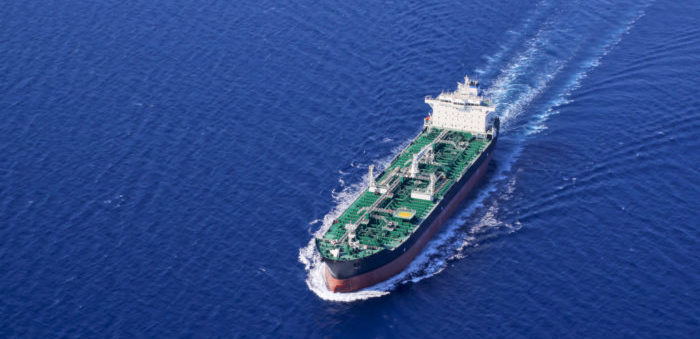Maritime market data analyst The Baltic Exchange has issued its weekly reports for 24-28 February 2020, to provide information of the bulk and dry market performance. The information is used by shipbrokers, owners & operators, traders, financiers and charterers as a reliable and independent view of the dry and tanker markets.
Few highlights from Baltic Exchange’s dry bulk and tanker reports for 10-14 Feb can be found as follows:
Tankers
-VLCC
- Despite Coronavirus, the Middle East market made some slight gains as cargoes in the first half of March had fewer competing owners.
- Rates for 270,000mt to China rose five points to WS 48, while 280,000mt to US Gulf, via the Cape/Cape routing, remained around the WS 30 level.
- In the Atlantic region, rates for 260,000mt West Africa to China recovered 2.5 points to WS 49 level and in the 270,000mt US Gulf to China market, rates hovered around $6.5m.
-Suezmax
- Activity in this sector has been maintained at recent levels, with rates down a point or so at WS 84 for 135,000mt Black Sea to the Mediterranean.
- Rates for 130,000mt West Africa to UK-Continent remained at WS 77.5.
- In the Middle East, the 140,000mt Basrah/Mediterranean route was again tested with charterers able to take about 2.5 points off last week’s levels to low WS 30s.
-Aframax
- Rates for 80,000mt Ceyhan/Mediterranean remain static at WS 85, while in the Northern European market, voyages of 80,000mt Cross-North Sea were taken down about 25 points to low WS 100s. 100,000mt Baltic/UK-Continent fell back another 15 points to WS 80.
- 70,000mt Caribbean to US Gulf rates collapsed 45 points to WS 145 and 70,000mt US Gulf/Mediterranean weakened further to WS 107.5, 17.5 points below a week ago.
-Clean
- Rates in the Middle East Gulf/Japan trade for 75,000mt easing five points from last week to barely WS 100.
- In the 37,000mt UK-Continent to US Atlantic Coast trade, it was a more volatile week with rates initially dipping down to low WS 150s at the start of the week, only for an uptick in demand leading rates to firm to WS 177.5, which was repeated three times.
- A run to West Africa is now on subjects at WS 215.
- In the 38,000mt backhaul trade from US Gulf to UK-Continent, rates also firmed, with several ships ballasting across to the UK-Continent market and this has seen rates recover 10 points, now nudging close to WS 100.
- The 30,000mt clean cross-Mediterranean market eased 15 points to WS 175, though brokers feel there is potential for the market to firm.
Bulk carriers
-Capesize
- The Capesize 5TC, now $2,274, has remained below $3,000 for three weeks straight, whilst market conditions seemingly continue to deteriorate.
- The West Australia to China C5 opened the week at $5.99 to close out the week at $5.20.
- The Brazil to China C3, which is still lacking in any solid spot cargo flow, opened the week at $13.015 to close at $12.585.
-Panamax
- The North Atlantic trades continued to struggle, but with fronthaul volume increasing from East Coast South America (ECSA), particularly end March/early April shipments, rates improved.
- However, several still viewed current levels within the Atlantic as a good buying opportunity and took cover by booking tonnage for two-to-three laden legs within the Atlantic.
- The highlight rate on Arrival Pilot Station (APS) ECSA, basis being $14,700 plus $470,000 ballast bonus on an 82,000dwt ship. $11,000 was also concluded a couple of times on nicely described 82,000dwt tonnage, both delivery Singapore.
- Elsewhere in Asia there were small incremental improvements over the week, with some support being lent.
- There were steady levels of fixing ex Australia and North Pacific, with mid $7,000’s for North Pacific rounds getting fixed on a couple of occasions.
-Supramax/Ultramax
- Sentiment was up in a few key areas over the last week with the Baltic Supramax Index (BSI) gaining 63 points since Monday.
- Period inquiry remained mainly from the Indian Ocean, with a 53,000dwt vessel open Arabian Gulf fixing one year’s trading in the $9,000s.
- From the Atlantic, better activity was seen from East Coast South America, with demand up particularly for Transatlantic runs.
- There were strong numbers from the US Gulf, with a 58,000dwt vessel reported fixing for a Japan trip at $21,000.
- There was a good number of clinker runs from the East Mediterranean, a 66,000dwt ship fixing delivery Turkey trip to West Africa in the $11,000s.
- The Asian Basin remained positional, but sentiment improved overall.
- More enquiry from the Indian Ocean, with Ultramaxes seeing in the low $12,000s and low $200,000s ballast bonus redelivery Pakistan/West Coast India.
-Handysize
- The Handysize market experienced a more positive week, with the Atlantic routes driving the charge on a positionally tighter supply/demand outlook.
- HS1, Continent-EC South America, and HS2, Continent-US East Coast, were the main beneficiaries, posting gains of 554, and 571 points respectively, on the week.
- The timecharter average duly gained 285 points on the week, to close at 5,831.
- The Pacific, meanwhile, remained subdued, both in terms of volume and rate levels, where it traded flat at the end of the week, as macroeconomic concerns continued to weigh.
- Brokers remained divided as to whether this week’s improvements were sustainable.
The full reports are available on Baltic Exchange’s website, under related category. Namely, the Baltic Exchange information is based on assessments made by a global panel of shipbrokers, covering voyage and timecharter rates for capesize, panamax, supramax and handysize bulk carriers; VLCC, aframax & MR tankers, LPG and LNG vessels as well as forward assessments, vessel values, market reports & fixtures and demolition values.




























































